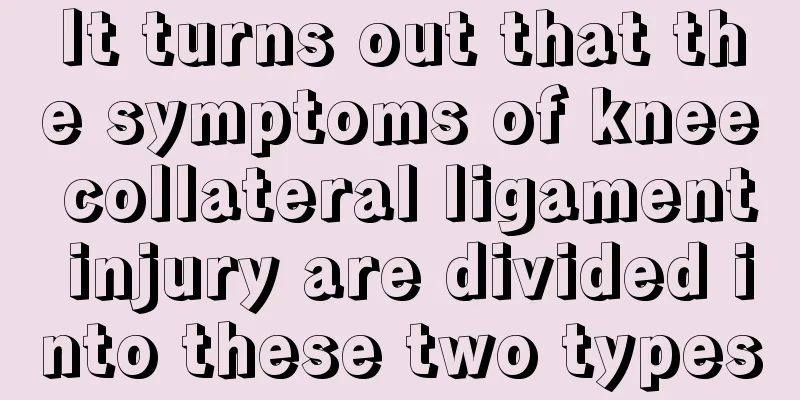It turns out that the symptoms of knee collateral ligament injury are divided into these two types

|
Knee collateral ligament injury is a common disease in daily life, which is often manifested as knee joint dysfunction and is often related to knee varus or valgus injury, seriously affecting people's normal work and life. So what are the symptoms of knee collateral ligament injury? In fact, it can be divided into internal and external. The medial collateral ligament located on the inside of the knee joint is called the medial collateral ligament, and the lateral collateral ligament located on the outside of the knee joint is called the lateral collateral ligament. Together, they maintain the lateral stability of the knee joint. When the collateral ligament is injured. There is often obvious swelling, congestion and tenderness on the injured side of the knee joint. The pain may be induced or aggravated by inversion or eversion of the knee joint. X-rays may reveal small avulsion fractures. Most collateral ligament injuries do not require surgical treatment and can heal on their own after a sufficiently long period of synchronous immobilization (about six weeks). If conditions permit, it is best to use a knee brace for fixation. It can ensure the recovery of the collateral ligament and allow a certain range of knee joint movement. If you don't have the conditions, you can use a knee brace or plaster. Complete rupture of the collateral ligament or avulsion fracture with obvious displacement usually requires surgical repair. The lateral collateral ligament can be divided into two categories: ligament sprain and ligament rupture due to different degrees of injury. (1) Ligament sprain: The ligament is subjected to excessive tension, causing partial tearing of the ligament, but the ligament is not completely ruptured. Therefore, the stability of the ankle joint is not seriously affected. The main symptoms are swelling of the outer ankle and pain during movement. However, the talar inclination was less than 15° on the AP varus stress radiograph under local anesthesia. (2) Lateral collateral ligament rupture: When the ankle joint suddenly and forcefully lands in inversion and plantar flexion, the lateral collateral ligament is subjected to excessive tension and the ligament may rupture. In the inversion and plantar flexion position, the anterior talofibular ligament is the tightest and most likely to rupture. The calcaneofibular ligament is tense during inversion, but not so tense during plantar flexion, and is less likely to rupture than the former. The posterior talofibular ligament is only slightly tense during inversion and is generally not easy to rupture. |
<<: Inguinal ligament strain symptoms and groin pain
>>: How to massage the ears to nourish the kidneys? Three methods can be used to do this
Recommend
What to do if your stomach feels uncomfortable after eating vermicelli
Many people love to eat vermicelli, but some peop...
What is bladder cancer? Check out the 4 causes of bladder cancer
Bladder cancer is a malignant tumor that occurs i...
A small piece of the inside of the tooth broke off
If we accidentally fall or hit our teeth, it is e...
What are the consequences of holding urine for a long time?
In many cases, many friends cannot go to the bath...
What causes flat nails?
In daily life, many people have uneven nails, but...
How to completely treat hamartoma
There are many methods for treating hamartoma at ...
How to make butter-free bread in the oven
The last step in making bread is often to put it ...
Can I eat nuts if I have high uric acid?
It is well known that if you have high uric acid,...
Symptoms and treatment of herpetic pharyngitis
Herpetic pharyngitis is an acute infectious disea...
Toothache root canal treatment process
Everyone must pay attention to their oral hygiene...
How to Remove Walnut Stains
Walnuts that are most likely to be stained are gr...
What is genetic testing?
Most genetic tests refer to DNA testing, which is...
Homemade natural blood stasis remedy - ginger wine for external application
Ginger is a common condiment in life. It is espec...
Can eye exercises cure myopia?
my country is a country with a large number of my...
How much is the treatment cost for endometrial cancer
I believe many female friends are familiar with t...









